Valentin Juhasz, an electronics engineer, has accumulated more than ten years of experience in the building conservation industry. His company, Core Conservation, has emerged as a leading player in investigating and addressing dampness issues in historic buildings.
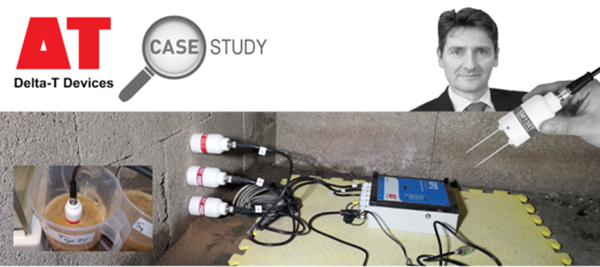
Image Credit: Delta T
Valentin's dissatisfaction with the sector's inadequate scientific comprehension regarding moisture in brickwork has motivated his current pursuit of an academic endeavor. Presently engaged in a Ph.D. program at Strathclyde University, he explains the dilemma:
“When it comes to dealing with problem dampness in pre-1930s buildings much of the conventional advice is guided by anecdotal evidence - and there is notable confusion at industry level.
Part of this issue relates to the difficulty of accurately measuring and monitoring the moisture content of masonry - and addressing this problem has become a key part of my research.”
The Challenges of Measuring Moisture in Brickwork
Valentin embarked on a practical and precise moisture measurement journey, initially utilizing "air pocket" relative humidity sensors. These microchip sensors, measuring a mere 3 mm x 3 mm, gauged air humidity and were conveniently integrated into the brickwork.
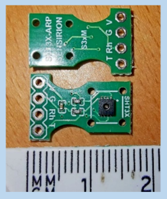
Example of an "air pocket" microchip sensor - prone to saturation in this application. Image Credit: Delta T
The prevailing assumption centered around a clear and direct correlation between the RH sensor readings, ranging from 50% to 100%, and the walls' actual (gravimetric) moisture content as determined by small core samples of bricks. These moisture levels typically span from 2% (air dry) to 15% (damp) or higher.
But things are rarely so simple, and after many months of research we identified a major problem.
Valentin Juhasz, Electronics Engineer
The predicament arose because even when the wall's moisture content was low, the air pocket sensors within the masonry swiftly saturated near 100% RH and remained stuck at that level indefinitely.
“Multiple experiments proved this behavior,” says Valentin, “and it became clear that when the gravimetric moisture content of the bricks went above 0.5%, the RH sensors became saturated and stopped showing any moisture changes thereafter.”
Consequently, in real-world scenarios where the moisture content of dry bricks seldom dipped below 1-2%, air-pocket sensors proved unfeasible as a reliable solution for beneath-the-surface moisture measurements.
Finding an Approach That Works
In light of these findings, Valentin searched for a new and efficient approach to measuring moisture. This quest led him to explore various soil moisture sensor solutions as potential alternatives.
Despite the obvious textural differences between soil and masonry, there are some notable similarities. So I decided to learn all I could about soil moisture measurement technology, with a view to potentially employing it.
Valentin Juhasz, Electronics Engineer
Valentin extensively studied numerous research papers comparing different soil moisture measurement technologies and manufacturers to gain insights. After thoroughly testing a range of soil sensors, he ultimately chose the SM150T Soil Sensor, developed by Delta-T Devices.
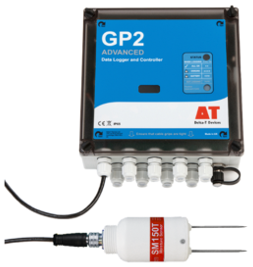
SM150T Soil Sensor and GP2 Advanced Data Logger. Image Credit: Delta T
Valentin emphasized several key features that made the SM150T the sensor of choice for this particular application.
Firstly, its compact size stood out as an advantage over larger and more cumbersome alternatives, ensuring easy and effective wall installation.
Secondly, the sensor's simple two-prong design proved to be much simpler to install than three or four-prong designs, which required precise drilling of multiple holes and were prone to errors.
The SM150T also performed exceptionally well, demonstrating its efficacy during the initial trials conducted in a low-humidity environment. It exhibited a remarkable ability to detect and monitor minute changes in moisture within the brickwork, correlating with variations in the surrounding vapor content.
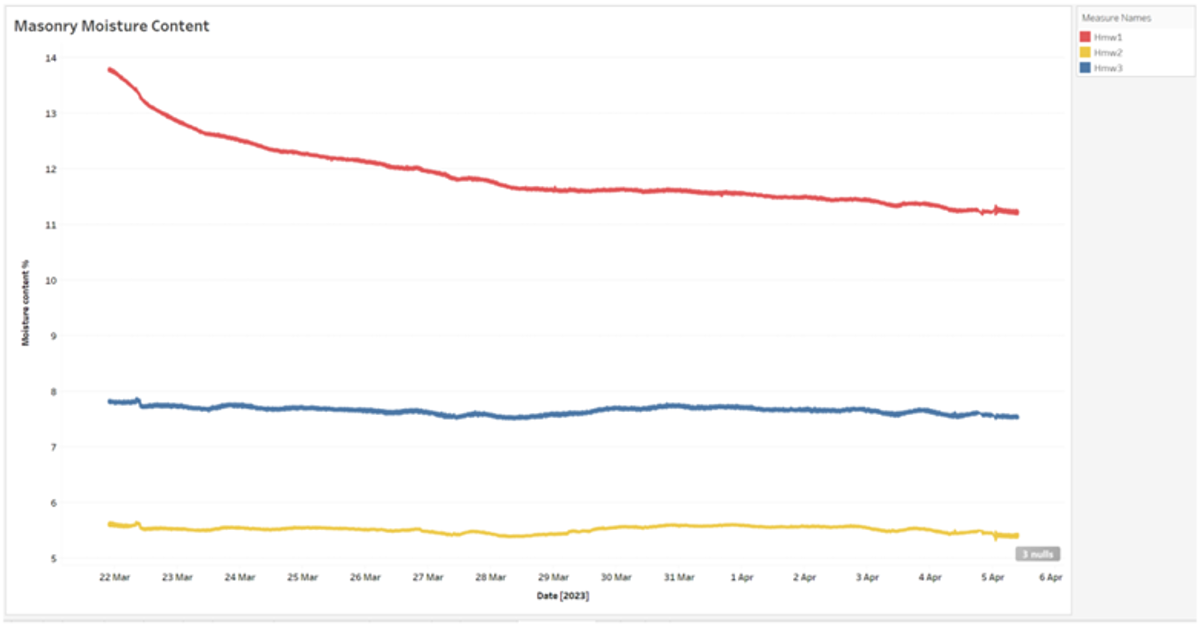
SM150T Masonry moisture data from Valentin's research. Image Credit: Delta T
Performance in Extreme Conditions
Valentin has been particularly impressed with the sensor's performance in extreme conditions. He highlights its ability to function effectively in high humidity and salinity environments.
“Salinity is a crucial factor in measuring moisture in historic brickwork, as evaporating moisture commonly leaves a notable build-up of salt deposits within the masonry,” he says,
“The SM150T Sensor has enabled me to create compensation models (within the accompanying GP2 Data Logger) that effectively correct any anomalies that the presence of high salt levels may have on the accuracy of the moisture readings.
This was only possible because the SM150T remained functional (and gave output readings) at very high moisture and salinity levels – for example in fully saturated sand across a number of increasingly saline solutions. This enabled me to obtain the data required for creation of effective correction models.
Other soil moisture sensors I auditioned refused to operate at even moderate levels of salinity and saturation – essentially flat lining and offering no coherent measurement data to work with.”
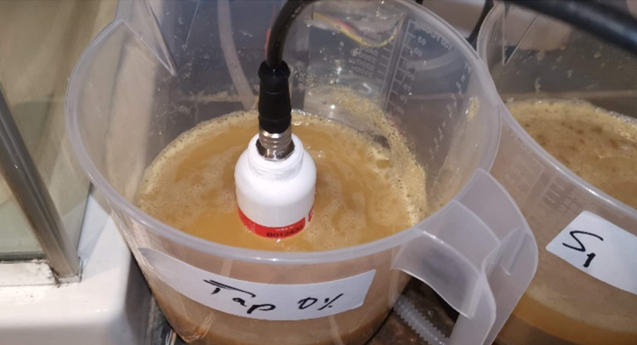
SM150T Sensor in saturated sand. Image Credit: Delta T
Aside from compensating for high salinity effects on moisture readings, Valentin also highlights other benefits of the GP2 Data Logger in his research. He emphasizes its robustness, waterproofness, and non-volatile memory, which prevent data losses. These features have proven to be highly valuable for his in-field monitoring experiments.
Valentin describes the GP2 Data Logger as an excellent piece of equipment that can be installed and left unattended.
Conclusions
After discovering an effective moisture measurement solution, Valentin utilizes it to advance the development of innovative technologies that optimize the health of building walls, whether historical or contemporary.
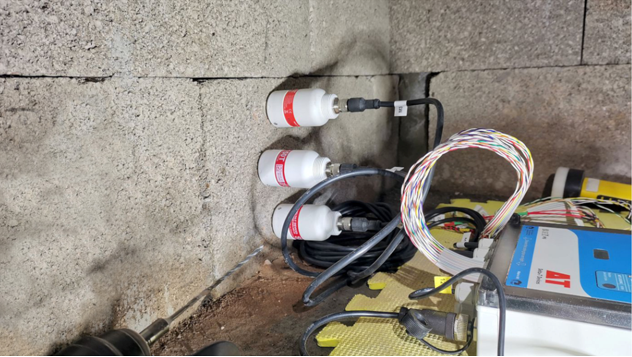
Three SM150T's measuring masonry moisture - data recorded by GP2 logger. Image Credit: Delta T
I’m currently experimenting with some very exciting new approaches to manipulating the moisture levels in brickwork. These non-invasive techniques are centred around affecting changes in the electromagnetic fields surrounding walls. The subsequent manipulation of wall surface charges can release low level moisture from inside the masonry, making damp walls drier.”
Valentin Juhasz, Electronics Engineer
Valentin explained that eliminating dampness can enhance a building's insulation properties aside from various other benefits—a dry building experiences less heat loss, which is particularly significant amidst the ongoing energy crisis.
He noted that the research related to this topic is crucial, and the Delta-T Devices equipment plays a pivotal role in Valentin's investigations. The continuous technical support provided, both before and after the purchase, has been exceptional in quality.
Valentin says, “I would certainly encourage the science community investigating dampness in building materials, be it surface water or moisture ingress, to use this sensor technology – because it works and can be calibrated to other types of materials than soil.”

This information has been sourced, reviewed and adapted from materials provided by Delta T.
For more information on this source, please visit Delta-T Devices.